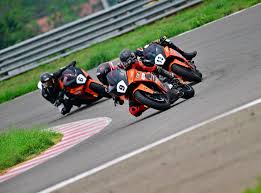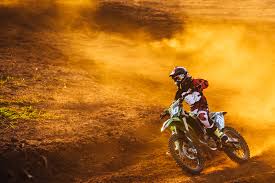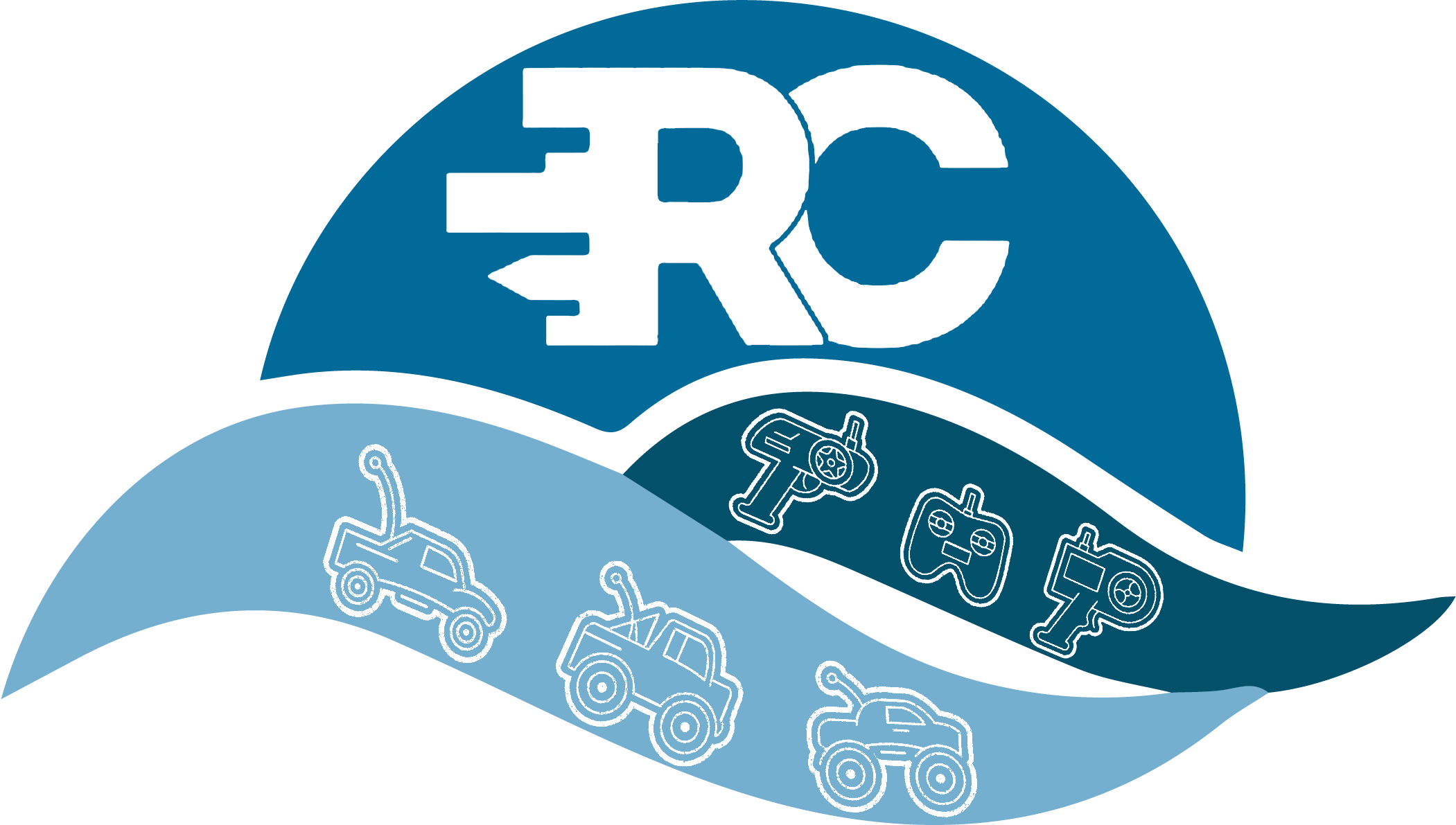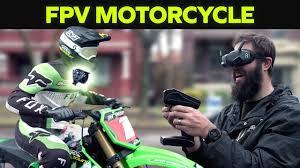Hello everyone! As you may have noticed, this article is about FPV RC motorcycling. FPV means First Person View. It’s like a 3D game or movie. You can get the experience of sitting in the seat without actually sitting in it. Sounds fun! Right? I’ll give you all the details about FPV RC motorcycling and after reading this article you can Start using FPV RC motorcycles as if you are experienced in it. So, let’s get started without any further ado. Shall we? Mmhm.
Table of Contents
Introduction
FPV RC motorcycling brings the thrill of motorcycling right to your fingertips, combining the excitement of remote-controlled bikes with the immersive perspective of FPV technology. This dynamic field allows users to mount cameras on RC motorcycles, transmitting a live feed to goggles or monitors to provide a “first-person” experience of riding. With the sensation of speed, balance, and control, FPV RC motorcycling presents a unique experience that combines technical know-how with real-time control.

In this comprehensive guide, we’ll cover the essentials of getting started with FPV RC motorcycling, from understanding the equipment and setting up your first FPV motorcycle to specific model recommendations that suit beginners and advanced users alike.
What is FPV RC Motorcycling?
FPV RC motorcycling involves the use of a camera-mounted RC motorcycle to deliver a live, first-person perspective through a headset or monitor. FPV technology has been widely popular in RC drone racing, but it’s now growing in popularity among RC motorcycling enthusiasts as well, bringing a unique, high-adrenaline experience for hobbyists and competitive riders. It’s a must thing to experience.

FPV adds a layer of realism to the RC motorcycling experience, allowing you to feel as if you’re riding the bike yourself. This makes it ideal for navigating tight turns, performing tricks, and participating in races, as it provides direct visual feedback that enhances control, precision, and maneuverability.
Benefits of FPV RC Motorcycling
FPV RC motorcycling has unique advantages that make it appealing for all kinds of users:
- Enhanced Realism: The FPV setup brings an immersive perspective, making it feel more like you’re actually on the motorcycle, navigating obstacles and handling speed in real time.
- Improved Control: FPV provides a direct view of the path ahead, allowing users to make smoother turns, better decisions, and take on more challenging courses with confidence.
- Skill Development: FPV RC motorcycling is great for improving hand-eye coordination, reaction time, and spatial awareness, making it a skill-building activity.

- Competitive Racing: FPV RC motorcycling has gained traction in competitive circuits, giving enthusiasts a new avenue for competition and social interaction.
- Stunt Capabilities: The FPV perspective offers the accuracy needed for executing complex maneuvers and tricks, which can be a thrilling experience for those interested in stunt riding.
Essential Components of an FPV RC Motorcycle
Setting up an FPV RC motorcycle requires specific equipment to ensure a smooth and stable video feed, optimal control, and durability on different terrains.
- FPV Camera: The camera is mounted on the motorcycle to capture live video footage. For RC motorcycling, cameras with wide-angle lenses work best, as they capture a broader field of view, allowing for more visibility on turns and obstacles. Some popular FPV camera options include:
- RunCam Nano 2: A lightweight, high-resolution camera that provides clear video quality and performs well in low-light conditions.
- Caddx Turbo Eos2: Known for compact design and sharp images, it’s particularly popular among FPV enthusiasts for both drones and RC vehicles.
- Video Transmitter (VTX): The VTX transmits the live video from the camera to the FPV goggles or monitor. High-powered VTXs with multiple channel options are ideal to ensure a clear and uninterrupted feed. Recommended VTXs include:
- TBS Unify Pro32 Nano: Compact, with adjustable power levels for optimized transmission, and ideal for shorter distances.
- AKK FX2 Ultimate: Known for its range and reliability, making it a great choice for longer distances and more complex terrains.

- FPV Receiver and Antenna: The receiver captures the signal from the VTX and transmits it to your FPV headset or monitor. A high-quality antenna can prevent signal drops and improve overall performance. Recommended antennas include:
- Lumenier AXII 2 Antenna: Durable and offers clear signal reception, designed for intense RC applications.
- TrueRC Singularity Antenna: A high-performance antenna with a lightweight design, ideal for maintaining a strong signal in various environments.
- FPV Goggles or Monitor: Goggles provide an immersive experience, while monitors allow for an easier viewing angle, especially for beginners. Two reliable options are:
- Fat Shark Dominator HDO2: High-quality optics, adjustable settings, and user comfort make these ideal for an immersive experience.
- Skyzone SKY02O: Budget-friendly with decent image quality and a range of adjustable settings for custom views.
Setting Up an FPV RC Motorcycle
Setting up an FPV RC motorcycle requires attaching the camera, connecting the VTX, and syncing it with the receiver. Here’s a step-by-step breakdown to ensure a smooth setup:
- Mount the Camera: Attach the camera securely at the front of the motorcycle, ideally with a slightly upward angle for a broader field of vision.
- Connect the VTX: Link the camera to the VTX with the provided cables, ensuring the connections are tight and well-secured to prevent signal loss.

- Install the Receiver: Connect the FPV receiver on your goggles or monitor and set it to match the VTX channel.
- Power Up the System: Connect your motorcycle’s battery, and power on the FPV system. Test the feed to make sure it’s stable and clear.
- Test the Signal: Walk around with the FPV system on to check for any signal loss or interference, making sure all components work smoothly.
Recommended FPV RC Motorcycles
Choosing the right FPV RC motorcycle depends on your skill level, budget, and the type of terrain you plan to ride on. Here’s a detailed look at top FPV RC motorcycle models suitable for various needs.
1. GX-YJWNY Stunt Rc Motorcycle

- Type: Electric, On-Road
- Price Range: $150 – $200
- Best For: Beginners and indoor riders
The GX-YJWNY Stunt Rc motorcycle is an electric RC motorcycle that provides a smooth on-road experience. It’s compact and beginner-friendly, with a gyro-stabilization system that helps keep the bike balanced at lower speeds. It’s perfect for indoor use or flat, paved outdoor areas.
- Features:
- Built-in gyro for easy balancing.
- Designed to handle turns and small jumps with stability.
- Battery-efficient, suitable for longer practice sessions.
- Why Choose It: For those new to FPV RC motorcycling, the GX-YJWNY Stunt Rc motorcycle offers a forgiving learning curve, allowing riders to master basic handling skills.
2. WLtoys 284131 FPV Motorcycle

- Type: Electric, Versatile (on-road and light off-road)
- Price Range: $120 – $180
- Best For: Budget-conscious beginners and light outdoor terrain
The WLtoys 284131 is an affordable, entry-level FPV motorcycle that can handle a bit of off-road terrain thanks to its durable build. It includes a basic FPV camera and is easy to upgrade with additional FPV equipment as skills develop.
- Features:
- Simple yet durable build, with shock-absorbing tires.
- Basic FPV camera included, ideal for short-range rides.
- Lightweight, making it easy to handle for beginners.
- Why Choose It: This model is a great option for those looking to try FPV without a significant investment, as it provides a good balance between quality and affordability.
3. Ducati Panigale FPV by X-Rider

- Type: Electric, On-Road
- Price Range: $250 – $300
- Best For: Intermediate riders, smooth pavement, and high-speed control
The Ducati Panigale by X-Rider is designed to resemble the real Ducati Panigale motorcycle and offers a performance-oriented experience for intermediate riders. It’s suited to those who are comfortable with RC control and want to add an FPV setup for racing or high-speed exploration.
- Features:
- Brushless motor for high-speed performance.
- Realistic body design, durable and high quality.
- Compatible with gyro systems for enhanced stability.
- Why Choose It: This model provides a more realistic experience and greater control, perfect for users ready to take their FPV experience to the next level.
4. Anderson M5 Cross FPV

- Type: Electric, Off-Road
- Price Range: $200 – $300
- Best For: Off-road riding and intermediate users
Built for off-road action, the Anderson M5 Cross is rugged, durable, and can handle uneven terrain. Its high-tread tires and sturdy frame make it perfect for off-road environments, adding versatility to your FPV riding experience.
- Features:
- Sturdy off-road frame with impact resistance.
- High-traction tires suitable for dirt, grass, and gravel.
- High ground clearance for better performance on bumpy surfaces.
- Why Choose It: For those interested in off-road FPV riding, the Anderson M5 Cross offers durability and versatility to tackle rough terrain with ease.
5. Venom VMX 450 FPV

- Type: Nitro, Mixed Terrain
- Price Range: $400 – $500
- Best For: Advanced riders, high-speed and mixed-terrain performance
The Venom VMX 450 is a premium, nitro-powered RC motorcycle geared towards advanced users seeking high-speed thrills and realistic performance. Its powerful engine and suspension system make it ideal for handling mixed terrains and intense racing environments.
- Features:
- Nitro engine providing realistic engine sound and high speeds.
- Advanced suspension system for mixed-terrain adaptability.
- Heavier frame for better stability at high speeds.
- Why Choose It: Ideal for serious FPV racers, this motorcycle delivers on performance and durability, designed to meet the needs of advanced users looking for a powerful machine.
Tips for FPV RC Motorcycling Beginners
- Practice in an Open Area: Start in a spacious area with minimal obstacles.
- Adjust Camera Angle: Experiment with different camera angles to optimize visibility.
- Start Slow: Begin at lower speeds to become familiar with handling and response.
- Monitor Battery Levels: FPV equipment can drain batteries faster; monitor usage.
- Master Turning Techniques: Smooth, controlled turns are essential to FPV riding.
Choosing an FPV Motorcycle Based on Terrain
Different models and configurations are suited to various terrains. Here’s a breakdown of terrain types and the ideal models for each:
- On-Road/Pavement: Models with smooth tires and lower suspension work well for pavement. Kyosho Mini-Z Moto Racer and Ducati Panigale by X-Rider are ideal on-road models.
- Off-Road: Off-road models have high ground clearance and high-traction tires. Anderson M5 Cross FPV is a top choice for dirt, gravel, and grass.

- Mixed Terrain: RC motorcycles that can handle both on-road and off-road conditions have balanced tires and sturdy frames. The WLtoys 284131 and Venom VMX 450 are great options for varied terrain.
Maintenance Tips for FPV RC Motorcycles
Routine maintenance keeps your RC motorcycle in top condition:
- Clean the Camera Lens: Ensure clear video by regularly wiping the lens.
- Check the Antenna: A bent or damaged antenna can reduce signal range.
- Inspect Tires and Chassis: Examine for loose parts, worn tires, or damage.
- Battery Maintenance: Avoid complete drainage of LiPo batteries for better lifespan.
Safety Tips for FPV RC Motorcycling
FPV RC motorcycling can be intense, and safety is essential:

- Use Safety Goggles: Ensure your FPV goggles fit well for clear visibility.
- Inspect Equipment Before Each Use: A quick check can prevent accidents.
- Avoid Crowded Areas: Ride in open spaces with minimal foot traffic.
Conclusion
FPV RC motorcycling offers a unique, immersive experience, combining the thrill of motorcycling with RC technology. By following this guide, you’ll be equipped with the knowledge to select, set up, and maintain an FPV RC motorcycle suited to your needs. Whether you’re drawn to racing, performing tricks, or simply enjoying the first-person view, FPV RC motorcycling is an exciting, skill-building hobby that’s accessible to all levels.
With patience and practice, you’ll soon master the art of FPV RC motorcycling, allowing you to take on more advanced challenges, races, and terrain with confidence. Dive in, explore different models, and discover the freedom and fun of FPV RC motorcycling today! For more information on RC motorcycles check my website.


